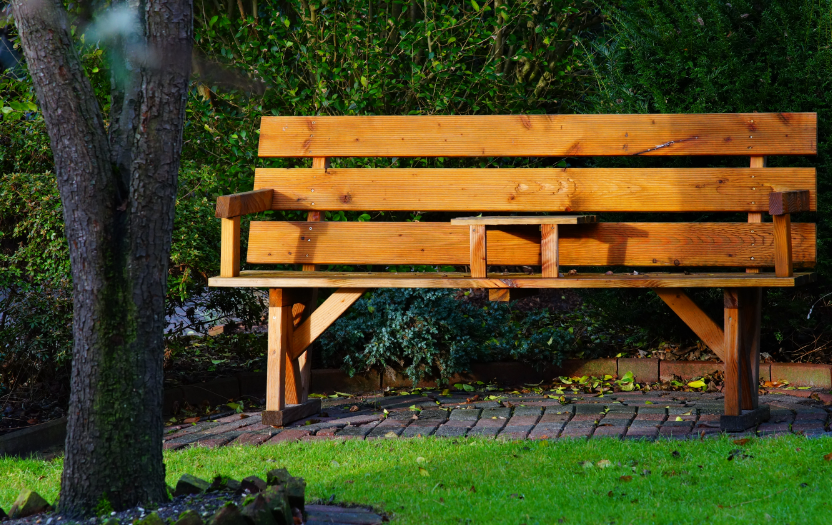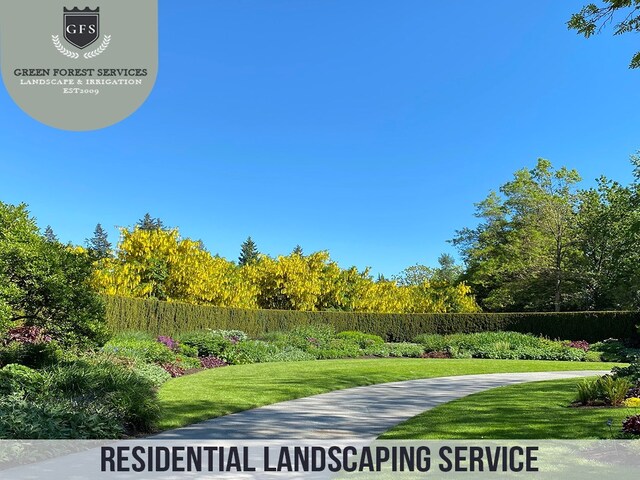Landscape design is the art and science of creating outdoor spaces that are both functional and aesthetically pleasing. There are several main aspects of landscape design, including site analysis, Hardscaping, softscaping, and maintenance.

Site Analysis
Site analysis is the first step in any Landscape Design & Maintenance project administered by a top company such as Green Forest Sprinklers. It involves a thorough examination of the site to determine its strengths, weaknesses, opportunities, and constraints. A thorough site analysis allows the designer to make informed decisions about the placement of Hardscaping and softscaping elements, as well as the selection of plants and materials.
Hardscaping
Hardscaping refers to the non-living elements of a landscape, such as walls, patios, pathways, and water features. Hardscaping design under Landscape Design & Maintenance involves creating functional spaces that are both aesthetically pleasing and durable. The choice of materials is an important consideration in Hardscaping design, as they must be able to withstand the elements and regular use. For example, a patio may be constructed from concrete, pavers, or natural stone, depending on the design and budget.
Softscaping
Softscaping, on the other hand, refers to the living elements of a landscape, such as plants, trees, and grass. Softscaping design involves selecting the right plants for the site and arranging them in a way that creates a cohesive and visually appealing landscape. The selection of plants should take into account factors such as climate, soil type, sun exposure, and maintenance requirements. It is also important to consider the color, texture, and form of the plants, as well as their growth habits and mature size.

Thorough maintenance
Maintenance is a crucial aspect of landscape design, as even the well-designed landscape will deteriorate over time if not properly cared for. Maintenance involves a range of activities, including watering, fertilizing, pruning, and pest control. The frequency and intensity of maintenance will depend on the specific needs of the plants and Hardscaping elements in the landscape, as well as the climate and season. Regular maintenance not only keeps the landscape looking its best, but it also helps to prevent damage and prolong the life of Hardscaping elements.
Focusing on sustainability
In addition to these main aspects of landscape design, there are several other considerations that are important to the overall success of a project. One such consideration is sustainability. Sustainable landscape design involves creating outdoor spaces that are environmentally responsible and resource-efficient. This may involve the use of native plants, drip irrigation systems, and recycled materials, among other strategies.
Accessibility
Another consideration is accessibility. A well-designed landscape should be accessible to all users, regardless of their physical abilities. This may involve the inclusion of wheelchair ramps, wide paths, and raised garden beds, among other features.
Conclusion
Overall, landscape design is a complex and multifaceted process that requires careful consideration of a range of factors. By taking into account site analysis, Hardscaping, soft-soaping, maintenance, sustainability, and accessibility, designers can create outdoor spaces that are not only beautiful but also functional and sustainable. Proper maintenance is key to ensuring that the landscape continues to thrive over time, and should be considered an integral part of any landscape design project.





